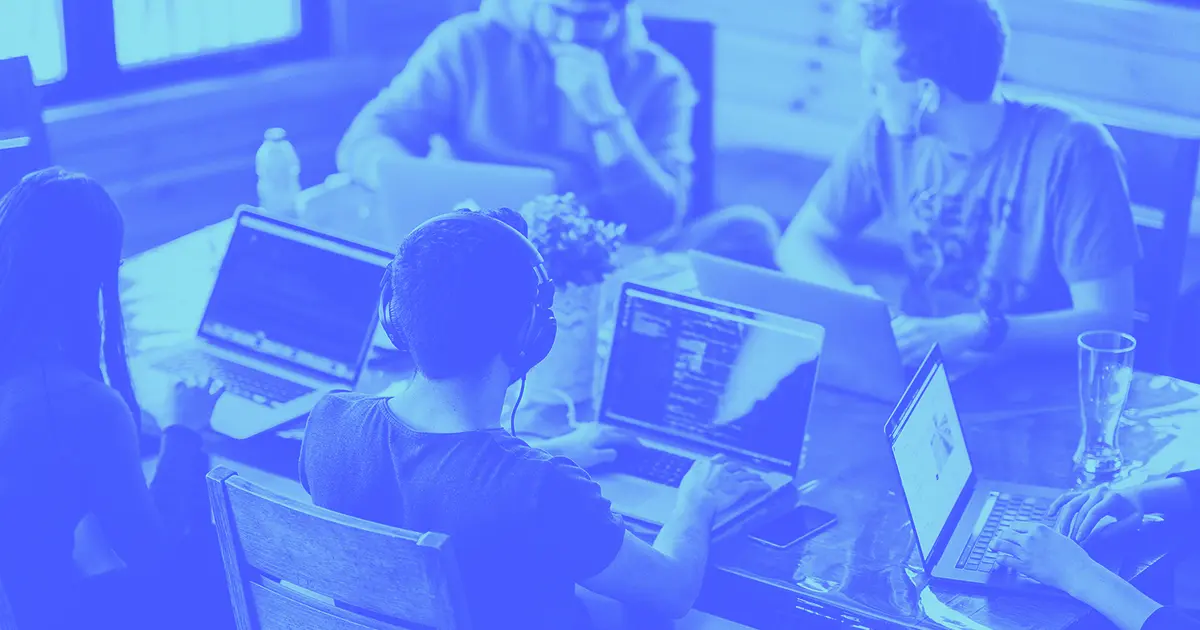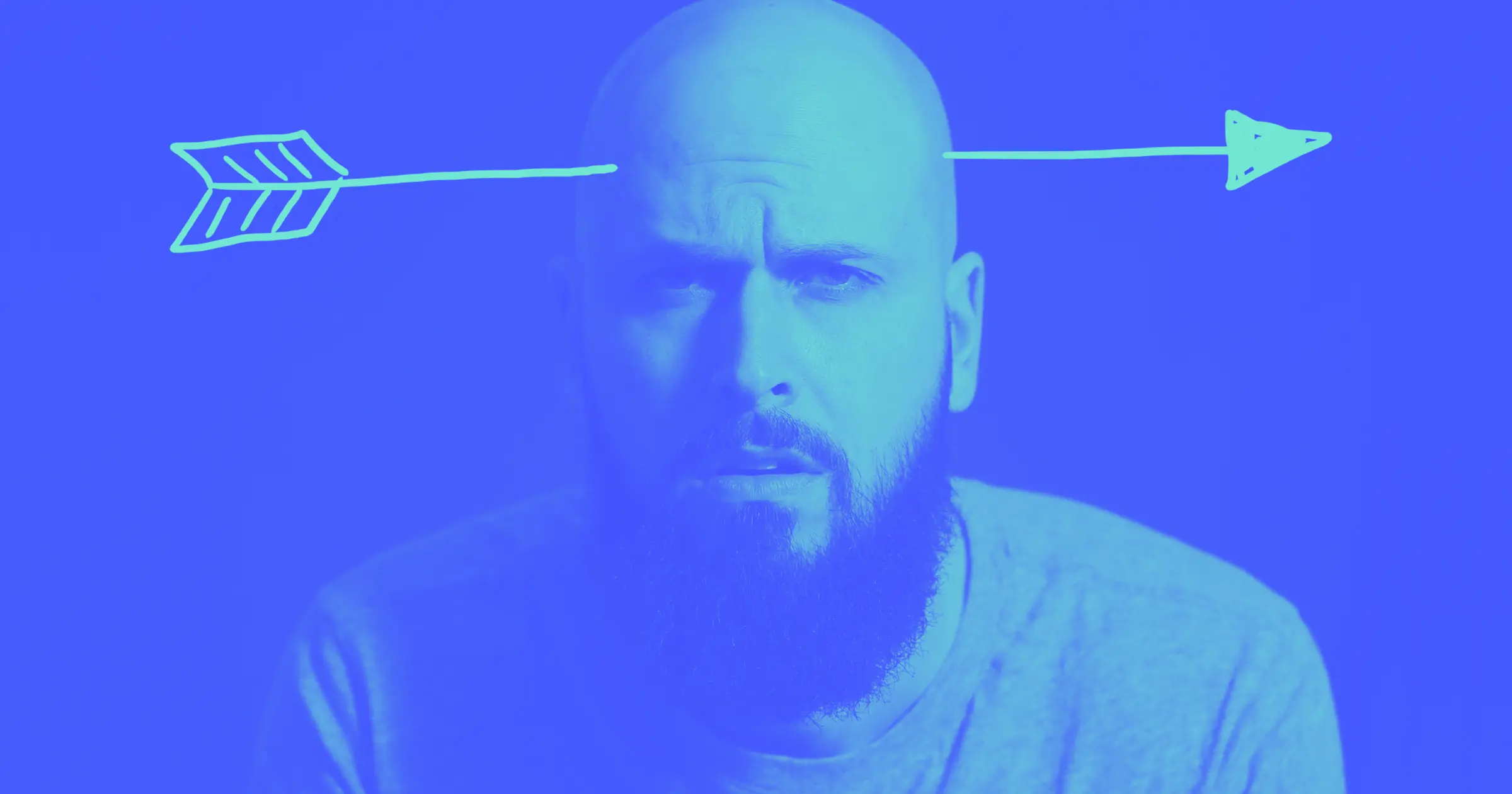At Webflow partner agency Edgar Allan, their process of conducting a website retrospective is called “looking back to move forward.”
The team at Edgar Allan have become experts at the art of the retrospective, using it to improve their processes, create sound structures for teamwork, and retain an impressive roster of enterprise clients.
Danielle Scherr, their director of business development, describes Edgar Allan as an agency focused on content that empowers companies to "move faster, own their stories, and build better digital experiences.”
Danielle shared with us the lessons and advice her team has gained from running these retrospectives, as well as the structure they used to make them so effective. You can use their experiences to run better retrospectives for your own team — both in-house at a company, or at an agency.
What is a website retrospective?
A website retrospective is a meeting held at the end of a website design and implementation project to reflect on and discuss how the process went. According to Danielle,“The point of a retrospective is to connect as a team and improve how you work.”
A retrospective should focus on asking questions that provoke meaningful discussions from your team. It’s an opportunity to reflect, talk through roadblocks, and make sure your team is all on the same page. This is where you recognize what went well, decide what you want to carry forward, and examine what you can improve in the future.
Go into your retrospective with the right frame of mind
More than anything else, the attitude your team brings to the table will affect how much they gain from a retrospective. They need to trust each other and be willing to dive into potentially sensitive feedback in a respectful and open way. Here’s how:
Be open to other perspectives
For feedback to be useful, everyone on your team needs to listen and trust their co-workers’ perspectives. It’s about having a mindset of good faith that their experiences are valid and their opinions are valuable to you.
“Go in open,” said Danielle. “Just because a problem came up for you doesn't mean it came up for anybody else, but I think it's an opportunity for your team to learn more about where you might have some sensitivity or where you might have some roughness. It's not just about the work, it's about being able to work together as a team.”
Stay solution-oriented
Every problem is an opportunity for growth and learning if you stay focused on solutions. Retrospectives are looking at the past, but the point of them is to use that experience to be better in future projects.
“We always want to carry knowledge with us into the next project to make sure that we're continuously growing and getting better,” said Danielle. “So it is always forward-looking.”
This means that retrospectives need to be focused on finding solutions, thinking about workarounds, and inventing new ways of approaching problems.
Communicate the positives
A retrospective will be more useful if you can keep the conversation focused on positive experiences and outcomes.
“A lot of times, retrospectives can turn into venting sessions, and sometimes you need that, but it shouldn't always be negative,” said Danielle. “It's an opportunity for people to come together and acknowledge not only what went wrong but what went really well.”
Negative experiences are opportunities for learning and growth, but the point of a retrospective is to move forward. Discuss the positive experiences that you want to remember and carry forward as a team.



















Build a better site experience
In our ebook, learn how to approach your next website redesign — from collaboration and trust-building to finding the right tools.
Focus on what you want your retrospective to achieve
Keep actionable goals in mind going into your retrospective, so you can put what you learn into practice.

Improved processes
You want to share thoughts and experiences as a team to improve your website development process. Communicating with intention at the end of a project helps your team avoid information silos and create better processes collaboratively. “We definitely have revised our process based on the feedback that we've gotten from previous projects,” said Danielle.
Talk about tools that worked or didn’t work. Analyze your processes. Identify where breakdowns happened. Look at effective approaches that you can use more broadly at your company. Examine your timelines to see if they were achievable.
The primary goal should be to make practical changes. At Edgar Allan, they implemented an improved process based on information uncovered in a retrospective. “At a ground level, we believe content is in the center of everything, but we found that our UX designers and our writers were not working in tandem as much as they should be,” said Danielle.
Writers and designers were siloed off from each other, so writers had to fit content into lorem-determined character counts instead of writing what was best for the user. “We overhauled our process, and now we're working in a system called content design where they are working on a project together from beginning to end.” With content design, they paired Brand Strategy Sprints with Content Discovery Sessions to make sure the users’ needs and goals were centered.
Healthier teams and more effective collaboration
Communication is a skill that takes practice. Teams that can practice their communication skills in a focused environment, like a retrospective, can collaborate more effectively with each other during crunch time on projects. “I think retrospectives are really important because making space to talk creates healthier teams and better projects,” Danielle said. “Our timelines get faster and our teams like working together more.”
Retrospectives help you grow as a team and grow as an individual by encouraging reflection and facilitating hard conversations. They can be especially helpful for bringing remote teams together. They help you understand what your strengths and your weaknesses are as a group and give you areas for improvement.
Better client relationships
Retrospectives should also focus on building better collaboration with new and existing clients. Danielle found that Edgar Allan’s retrospectives helped empower their teams to establish better communication with clients, push back on problems more diplomatically, and anticipate and get ahead of potential roadblocks.
“They have more confidence talking to clients because not only do they have the experience from the past project, but they've got the experience of talking through it as a team and understanding why doing things the way that we've done it or not doing things the way that it's being suggested are valuable,” she said.
How to set up your website retrospective
Put a retrospective on your calendar for the end of each project. You’ll get better insights if you hold your retrospectives within two weeks. That way, the experience is still fresh in everyone’s mind.
Choose your facilitator
A retrospective facilitator is there to ask questions, take notes, and press further to get to a deeper level of discussion. They shouldn’t be the one with the answers; instead, they should push the team to come up with solutions on their own. At the end of the retrospective, they can assign action items and remind the team of their discoveries as they start the next project.
When looking for a facilitator, find someone who can be neutral about the feedback and won’t get defensive or try to rationalize. “I think an effective facilitator of a retrospective will let everybody know that it's a safe space, and it's a place for your team to be open with what came up for them,” said Danielle.
For a brand new team or an especially fraught project, you may want to bring in an outside facilitator. For an experienced team with a good working dynamic, however, the scrum master or any other team member can serve as the facilitator. What’s most important is that the facilitator is someone who the team trusts and feels comfortable sharing openly with.
Use a game to prompt discussion
For Edgar Allan’s retrospectives, Danielle produced a card deck with questions that they could use to facilitate better retrospectives. While working with a client who had never done a retrospective before, Danielle used her experience as a scrum master to create a list of 25 questions that could prompt better conversations.
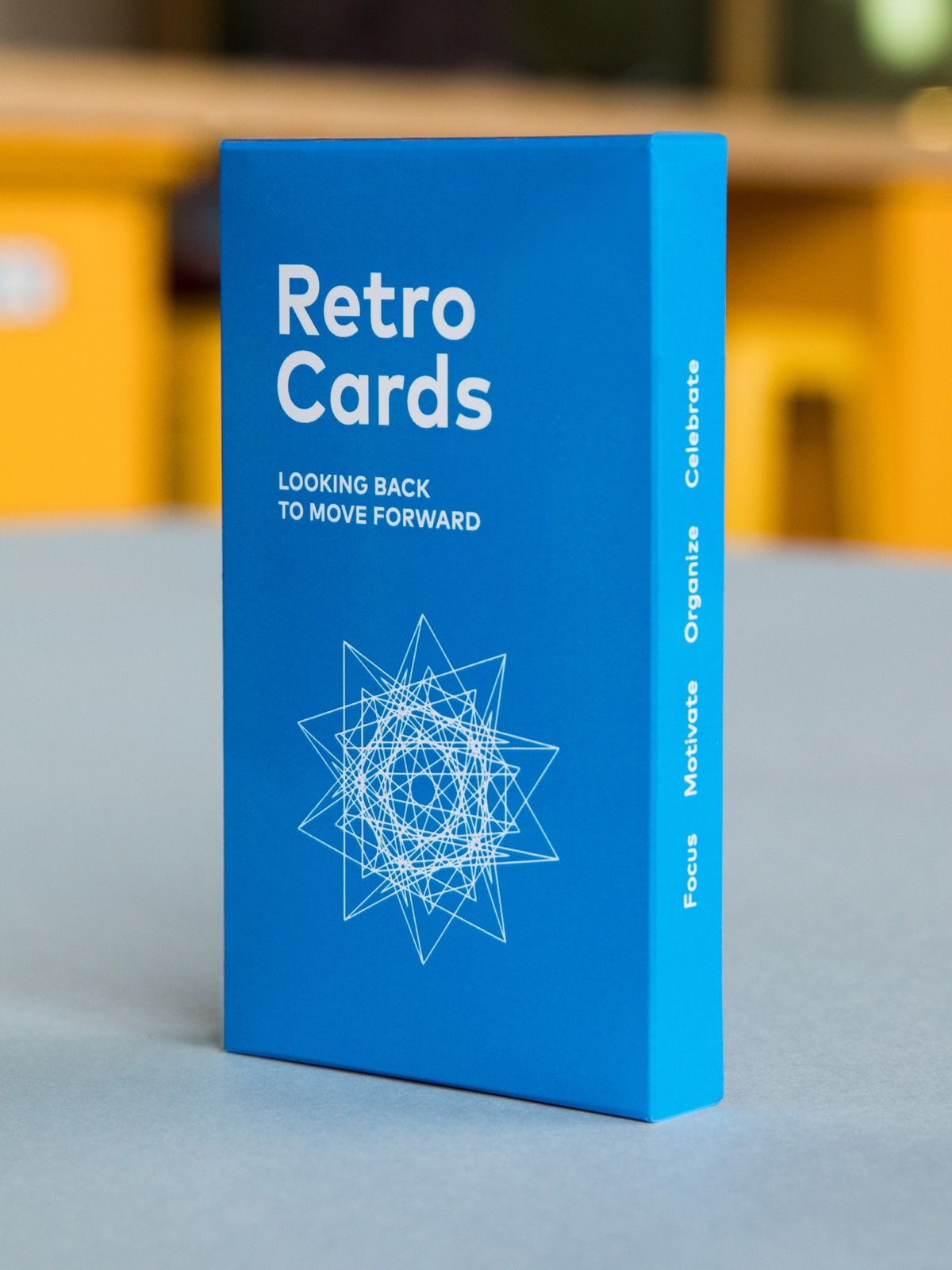
Her boss thought they would make a great game, and, together with their creative director, they produced a beautiful set of cards with nine categories of conversation-provoking questions, such as, “What was your most frustrating moment?” and “What was your greatest moment of clarity?” The cards can be purchased from their website, but we’ve outlined the categories Danielle developed at Edgar Allan, so you can come up with your own questions for your team.
Structure your retrospective to spark the conversation you want to have
Format your retrospective to focus on the questions you need answers to and provoke the discussions that are most important for that project. A high-conflict project might need a very different retrospective than an easy, routine one.
Edgar Allan color-coded their deck of questions, giving their team the opportunity to focus their retrospective on certain topics. “We've used them in a lot of different ways,” said Danielle. “You can have it really focused on one topic or just literally throw the deck of cards on the table and choose one at random and say, okay, this retrospective is going to be about praise. Who in the room has something that they want to say?”
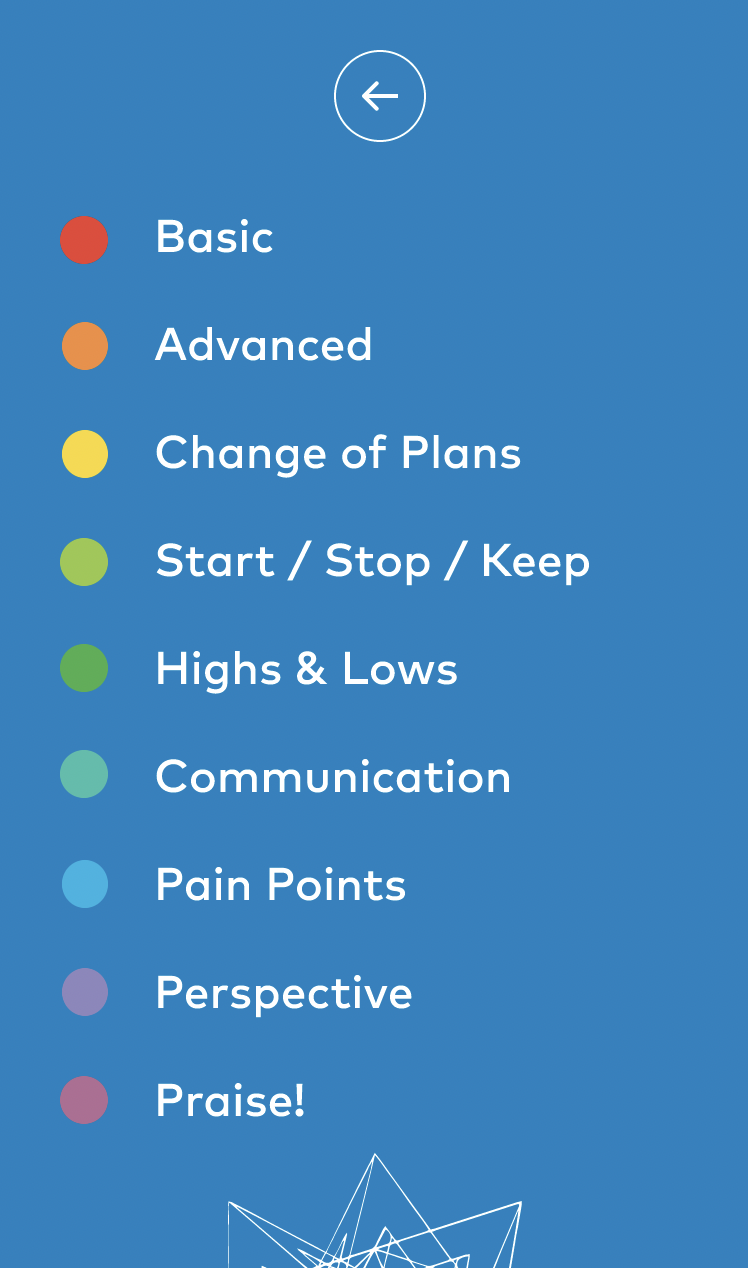
Use these categories to shape the questions you ask in your retrospective.
Basic
The basic category covers four fundamental questions: what went well, what could have gone better, what you learned, and what unanswered questions you still have. These questions should be asked at every retrospective. “If there isn't anything specific that we want to talk about, we'll use the basic cards. We just swirl them around the table and this opens conversation up for everybody,” said Danielle.
Advanced
A mature team that has been through a few retrospectives together might find the basic four questions get less effective over time. They might want questions that are more pointed or delve a little deeper to keep things fresh and feedback useful. You can discuss where you made compromises, what changes you would make in the future, and why.
Change of Plans
If your process ended up looking significantly different than what you had projected, you want to talk about why. “Change of plans is probably going to happen every time on a project,” said Danielle, “The question is how are we handling that? How are we communicating with our clients or internally when things change? How do we still create efficiencies, knowing that things didn't go exactly as planned?” By understanding why plans changed, you can anticipate problems and plan projects better moving forward.
Start/Stop/Keep
With this category, you’ll name the aspects of the process your team would recommend they start doing, stop doing, or keep doing. This approach is action-oriented and gets straight to the point. It is helpful when a project has been frustrating, the conversation has gotten circular, or a lot of venting has been going on.
Highs & Lows
Talking through the highs and lows of a project in a more feelings-oriented way helps build team unity and relieve any remaining tension. It can also get more granular. You can talk about what you enjoyed doing, what new technologies worked, or what new roles you enjoyed taking on. Lows often address challenges, missing resources, or breakdowns in communication.
Communication
Team members will often already know where their breakdowns happened and why, so make space for them to talk about it openly. “What we have found is that the majority of issues that arise on projects are all communication-based,” said Danielle. Discuss communication within the team and with the client. Ask team members how they could have communicated better or what approaches have worked in the past. This will make future projects go more smoothly by encouraging better communication practices.
Pain Points
Identify roadblocks, like scope creep or misaligned expectations, and figure out how you can see and avoid them in future projects. Stay solution-oriented with this one so it doesn’t turn into a venting session. If the conversation becomes circular or turns into complaining sans-solution, the facilitator should step in. They can ask team members to identify their biggest impediments and see if anything still feels unresolved.
Perspective
Perspective refocuses the team on the big picture rather than on individual experiences. Take a step back and look at the project as a whole, the relationship with the client, or your approach as a team. Discuss how your team has grown through the process. This helps each member of the team understand how their role contributes to the success of the entire project.
Praise
It’s important to celebrate successes and acknowledge your teammates explicitly. People work better when they feel like their accomplishments are being seen and recognized. Look at all the hard work you’ve done and everything you’ve accomplished during this project. Call out each other’s successes individually and as a team. Identify successes you want to carry forward to future projects.
Bring collaborators into the process
Agencies working on websites for clients and businesses using agencies to build their websites should both solicit feedback from the other half of their website-building process. You may uncover unstated assumptions on one or both sides that caused miscommunication or get valuable input from their outside perspective.
Make improvements to your process based on shared feedback. For example, if an agency schedules meetings for Mondays but the other team is never available, note that you should avoid Monday meetings in future projects. “It will help set expectations and set guidance about how the project will be successful upfront,” said Danielle.
Agencies and businesses can do separate retrospectives and share findings or do a combined retrospective focusing on how you collaborated. “If you have a really good relationship with your client and they become an extension of your team, by all means, invite them,” said Danielle. “If you're going to continue working together and you really enjoy working together, they should be involved in the feedback cycle.”
Turn your findings into concrete actions
Based on what you learned in your retrospective, you’ll be able to set clear, concrete next steps. Add findings to customer files, search for new tools to work with, and set up new working systems for your team. Don’t just let your notes linger in a file somewhere, never to be looked at again. Make positive changes immediately while the lessons are still fresh.
Continue to hold regular retrospectives
Progress builds on itself. Make consistent space for reflection and growth, both individually and as a team. Hold regular retrospective meetings and continue to improve your processes with each cycle. Edgar Allan’s well-worn retrospective cards show just how useful the retrospective process has been for their team.
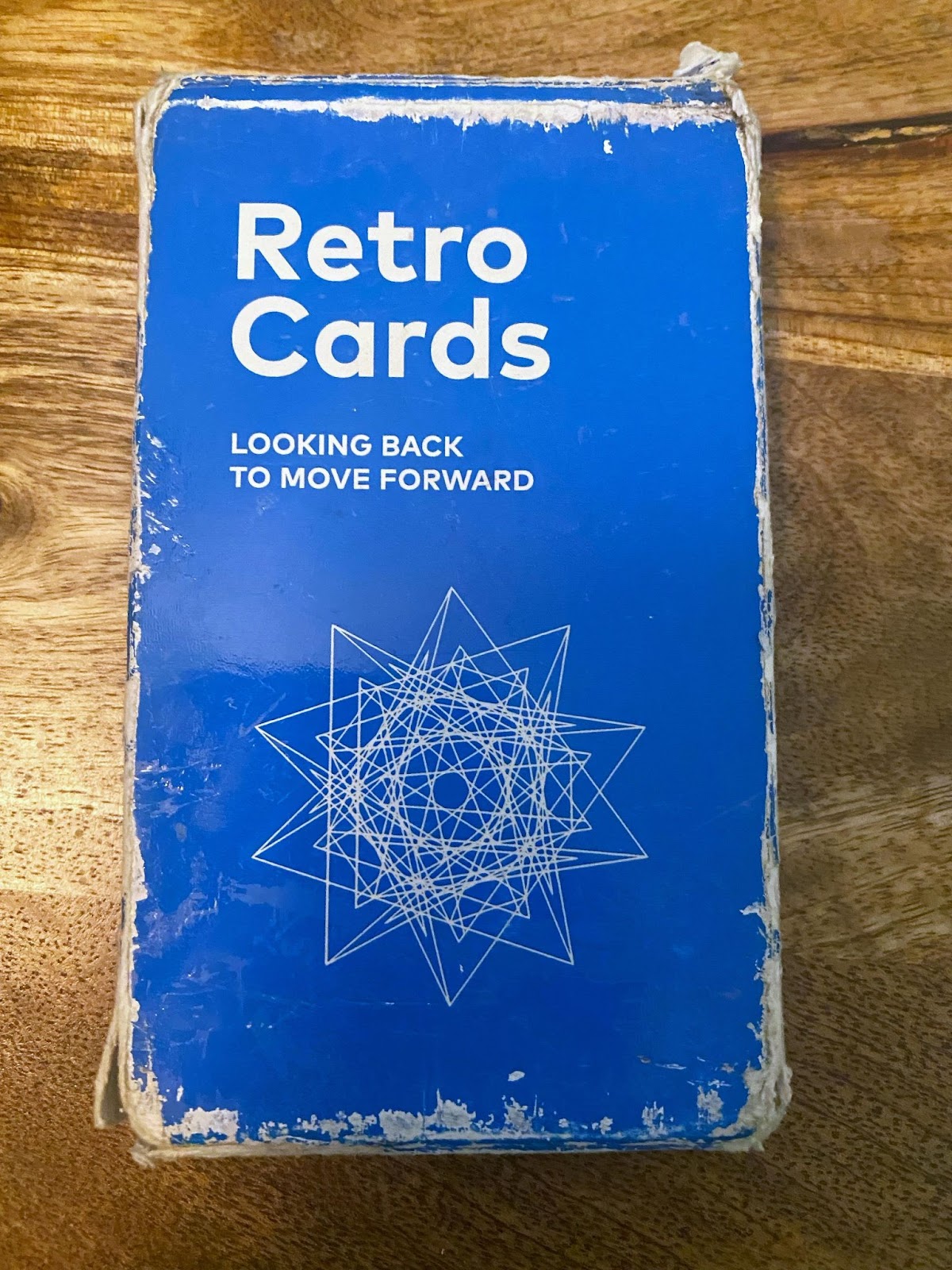
You can even run a solo retrospective. Sit down, ask yourself the hard questions, and reflect on your own performance. You can uncover important insights into yourself and your work. “As humans, we sometimes will avoid conflict, even if it's internal,” said Danielle. “The cards help you bring that stuff up and talk about it.”


